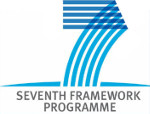Ink transport modelling in Dip-Pen Nanolithography and Polymer Pen Lithography
Urtizberea, Ainhoa ; Hirtz, Michael ; Fuchs, Harald
Resumen: Dip-pen nanolithography (DPN) and Polymer pen lithography (PPL) are powerful lithography techniques being able to pattern a wide range of inks. Transport and surface spreading depend on the ink physicochemical properties, defining its diffusive and fluid character. Structure assembly on surface arises from a balance between the entanglement of the ink itself and the interaction with the substrate. According to the transport characteristics, different models have been proposed. In this article we review the common types of inks employed for patterning, the particular physicochemical characteristics that make them flow following different dynamics as well as the corresponding transport mechanisms and models that describe them.
Idioma: Inglés
DOI: 10.1515/nanofab-2015-0005
Año: 2016
Publicado en: Nanofabrication 2, 1 (2016)
ISSN: 2299-680X
Financiación: info:eu-repo/grantAgreement/EC/FP7/328163/EU/In depth characterization of bio-mimetic lipid membrane structures generated by dip-pen nanolithography/DPNLipidMembranes
Tipo y forma: Artículo (Versión definitiva)
 Debe reconocer adecuadamente la autoría, proporcionar un enlace a la licencia e indicar si se han realizado cambios. Puede hacerlo de cualquier manera razonable, pero no de una manera que sugiera que tiene el apoyo del licenciador o lo recibe por el uso que hace. No puede utilizar el material para una finalidad comercial. Si remezcla, transforma o crea a partir del material, no puede difundir el material modificado.
Debe reconocer adecuadamente la autoría, proporcionar un enlace a la licencia e indicar si se han realizado cambios. Puede hacerlo de cualquier manera razonable, pero no de una manera que sugiera que tiene el apoyo del licenciador o lo recibe por el uso que hace. No puede utilizar el material para una finalidad comercial. Si remezcla, transforma o crea a partir del material, no puede difundir el material modificado.
Exportado de SIDERAL (2022-08-31-09:48:34)
Visitas y descargas
Idioma: Inglés
DOI: 10.1515/nanofab-2015-0005
Año: 2016
Publicado en: Nanofabrication 2, 1 (2016)
ISSN: 2299-680X
Financiación: info:eu-repo/grantAgreement/EC/FP7/328163/EU/In depth characterization of bio-mimetic lipid membrane structures generated by dip-pen nanolithography/DPNLipidMembranes
Tipo y forma: Artículo (Versión definitiva)
Exportado de SIDERAL (2022-08-31-09:48:34)
Enlace permanente:
Visitas y descargas
Este artículo se encuentra en las siguientes colecciones:
Artículos
Registro creado el 2022-08-17, última modificación el 2022-08-31
